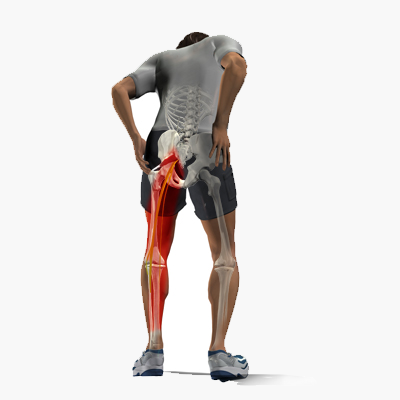Piriformis syndrome is a condition in which the piriformis muscle irritates the sciatic nerve and causes pain that starts from the glute and descends the back of the leg and into the foot. The pain mimics typical sciatica caused by a herniated spinal disc. The syndrome is more common in women and people who exercise systematically like runners.
Piriformis syndrome is caused when the piriformis muscle swells or has spasms constantly and as a result, it compresses the sciatic nerve which goes through the piriformis muscle and goes down the back of the leg. Sciatica caused by the sciatic nerve irritation is of peripheral etiology and is not due to inflammation of the nerve root by intervertebral disc herniation or other spinal ailments, as is the case with actual sciatica. However, the symptoms are almost the same in both cases and sometimes patient is led wrongly to a spinal operation, as the pain persists after that as well.
Which is the Piriformis muscle?
The piriformis muscle is a small muscle located deep in the buttock (behind the gluteus maximus).
The piriformis muscle:
- Starts at the lower spine and connects to the upper surface of each femur (thighbone)
- Functions to assist in rotating the hip
- Runs diagonally, with the sciatic nerve running vertically directly beneath it
This post is also available in: Greek




